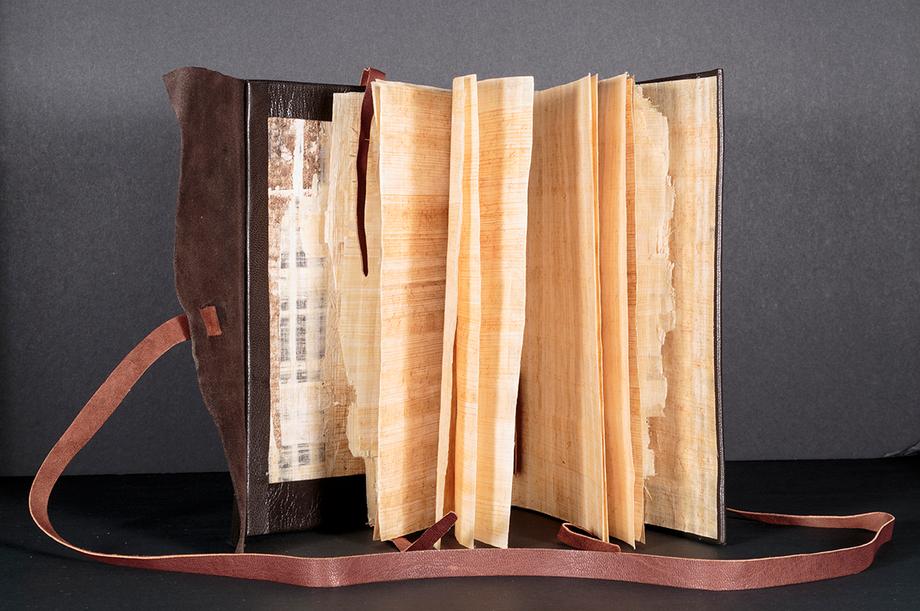The History of Bookbinding from 200 to 1900: A Structure-Based Perspective
This five-day workshop explores the evolution of bookbinding structures from around the year 200. Applying to attend is required.

Dates: To be determined for 2026
Location: Special Collections Research Center on the 6th floor Hatcher Library South on the University of Michigan’s Central Campus in Ann Arbor, Michigan. The workshop will be in the Presentation Space (Room 660D).
Fees: There is no charge to attend the workshop. Attendees are responsible for covering the cost of travel, lodging, and meals.
Apply to attend: We will open the application form when the 2026 dates are announced.
Image is of a binding model based on a fragment of a leather cover: P. Mich. Inv. 1289. Julia Miller.
Workshop description
This five-day workshop explores the evolution of bookbinding structures from around the year 200, which marks the emergence of the earliest known examples of codices in Egypt, through the nineteenth century.
In addition to examining early non-codex book structures, such as wooden tablets and scrolls, the workshop delves into the development of codex bindings during late antiquity and the Middle Ages. Furthermore, it analyzes a wide range of European bindings from the second half of the fifteenth century, coinciding with the introduction of the movable-type system of printing in Western Europe, through the early decades of the nineteenth century.
Although the workshop's primary focus is on Western bookbinding traditions, it also explores Islamic and Asian bindings. While the sessions primarily concentrate on studying the structural elements of bindings, attention is also given to decoration as a means of identifying specific traditions and periods.
The workshop employs a combination of lectures, group discussions, and engaging hands-on exercises, as well as special lectures delivered by experts. Participants have the opportunity to closely examine and handle numerous historical exemplars and bookbinding models sourced from the Papyrology Collection and the Special Collections Research Center.
Learning outcomes
Workshop participants will:
- Be equipped with the skills to describe and interpret binding structures in order to address broader aspects of book history.
- Learn about the development of local, regional, and national book traditions, the significance of provenance, the challenges of dating bindings, and the overall impact of bookbinding on society.
Intended audience
This workshop is of interest to a wide range of scholars, and library and museum professionals, including art historians, papyrologists, curators, conservators, and bookbinders.
About the presenter
Julia Miller, a bookbinding scholar and conservator, will lead the History of Bookbinding workshop. Miller’s extensive research on bookbinding history is documented in publications like Books Will Speak Plain: A Handbook for Identifying and Describing Historical Bindings.
Recommended readings and daily schedule
We encourage attendees to complete a set of recommended readings in advance.
Along with Julia Miller’s presentations, 5 experts will give special lectures. See what content to expect each day.